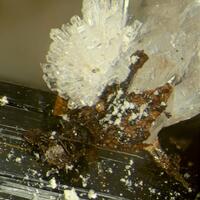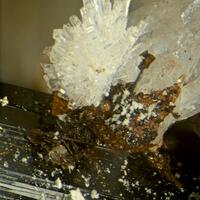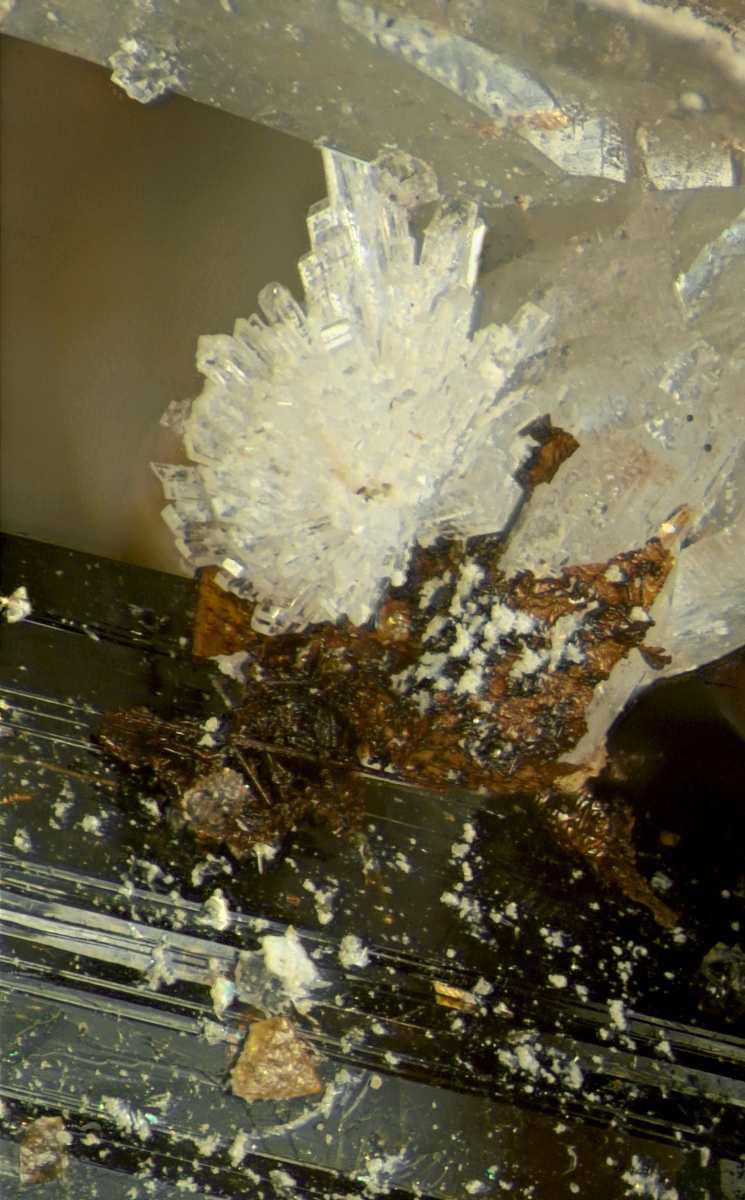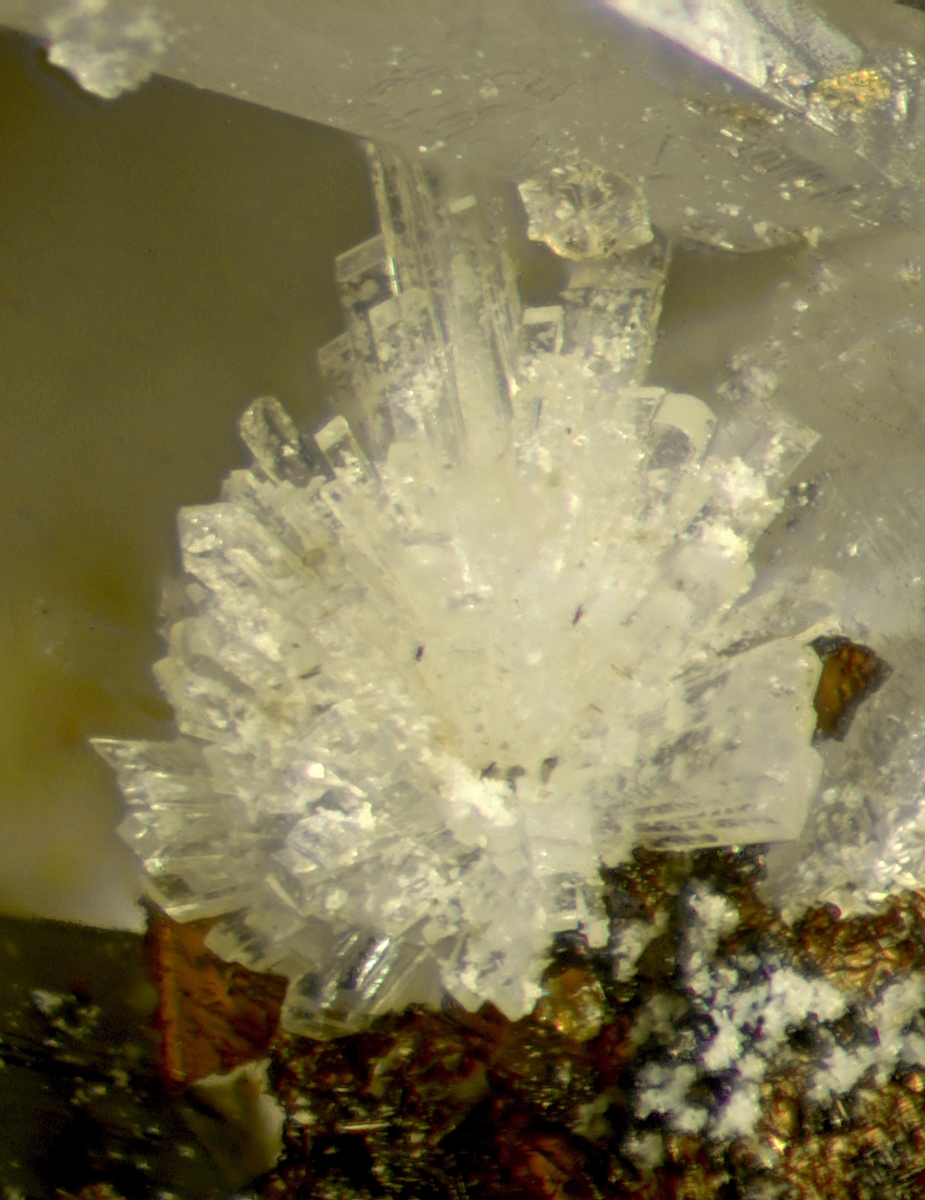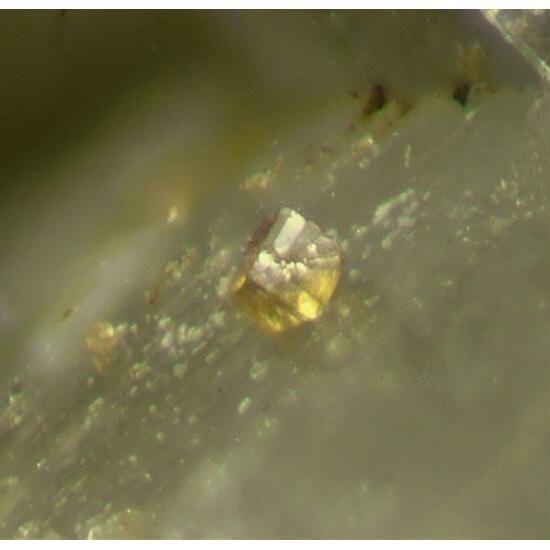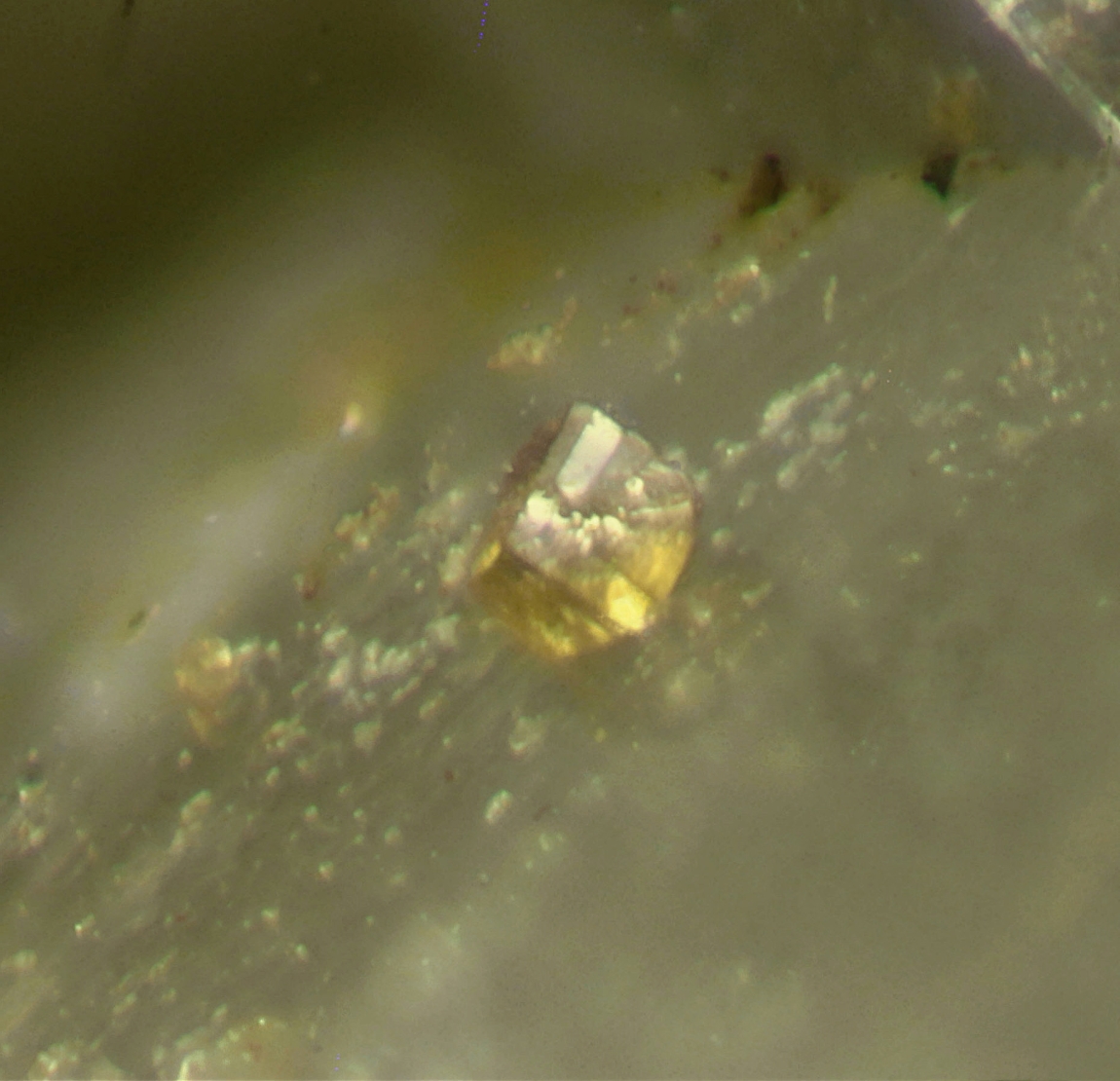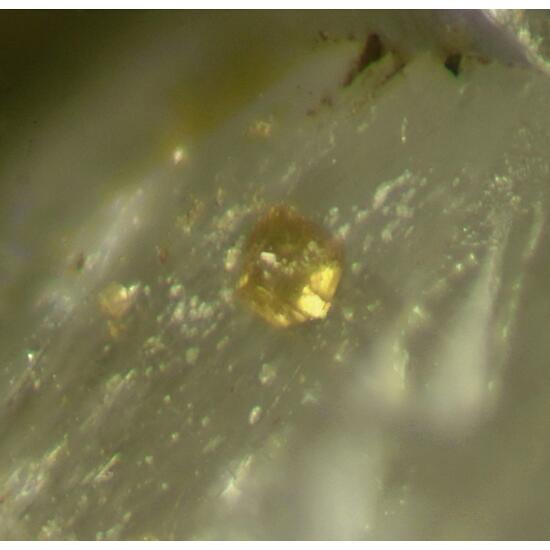MSH is the TL for natrolemoynite. It is very rare here. The only other reported locality is Suoluav Mt. in the Lovozero Massif, where it appears to be sub-microscopic.
This is a small, but extremely unusual, analyzed, specimen for MSH. At the time of publication of the natrolemoynite paper (available via the RRUFF database), all but one of the examples of natrolemoyntie known came from a heavily altered pegmatite first encountered in 1964-5 and again in 1985. This specimen dates from about 2002 and is probably from an “offshoot” vein of the Poudrette pegmatite. (But that is not certain – boulders in the quarry can come from anywhere, and might predate 2002.) In addition, these crystals are nearly glass clear, with no trace of the resinous coating (now identified as lepidocrocite) that coats almost all of the early specimens.
The qualitative EDS scan for this specimen is essentially identical to that for a similar specimen, found at about the same time, that was verified as “lemoynite” via PXRD many years ago. (This result was a surprise both for me and for the analyst.) I have provided scans for both specimens. See the “Analysis” tab. Scan #305 is for this specimen; scan #326 is for the fully verified specimen.
The major difference between these scans is the higher K peak in #305. These are just qualitative scans, so quantitative comparison of peaks is “strictly forbidden”. (For one thing, peak heights depend on other factors besides composition.) But if I do it anyway (by estimating relative sensitivity for Si vs K from scans for “known” minerals, I get an estimate of 0.6 atoms of K per 10 atoms of Si. In the 2001 natrolemoynite paper, the average for 19 probes of the type material was 0.3 atoms of K per 10 of Si. So 0.6 doesn’t seem “out of the ball-park”.
The only other possibleinterpretation for the scan (besides tumchaite, catapleiite, gaidonnayite, and hilairite – none of which look remotely like this), is elpidite. One would expect a slightly lower Zr peak relative top Si, for elpidite but I have scans for probable elpidite specimens that are very similar to #326 (less so to #305). However, elpidite is orthorhombic, whereas natrolemoynite is monoclinic, and the terminations look different. I have included small photos of the respective terminations with both #305 and #326. The terminations are similar, and look like natrolemoynite terminations – not like elpidite.
Bottom line: This is natrolemoynite – not elpidite.
Note: The specimen came to me as “harmotome”, allegedly vetted by an MSH expert. But after much staring, I couldn’t reconcile it with that interpretation. Clearly, EDS shows that it is not harmotome – or phillipsite.
The first pair of photos (FOV 2.2 x 3.3) shows the entire natrolemoynite spray, which spans 1.4 mm. The spray sits on a black aegirine prism with a single octahedron of yellow “pyrochlore” ca 0.25 mm on edge. There are a few more pyrochlore crystals elsewhere. (The validated “pyrochlores” at MSH are fluorcalciopyrochlore and fluornatropyrochlore, but qualitative EDS probably can’t distinguish most specimens of these because of the extreme insensitivity to Na.)
The next photo (FOV 1.4 x 1.8 mm) is an attempt to show the terminations more clearly. But my scope isn’t really up to such high magnification, so the image isn’t very sharp. Individual natrolemoynite prisms are ca 0.9 mm long.
In addition to pyrochlore, there are a few small yellow unidentified “cuboids” or “rhomboids”. Perhaps they are just siderite, but they look “suspicious” to me. Unfortunately, the sample I sent for analysis got buried in the carbon tape by the USPS, so I don’t know if this is garbage or something interesting. In any case it is very small. One of the crystals is shown in the next pair of photos (FOV 0.75 x 0.75 mm). It measures ca 0.1 mm on edge. There is at least one other (equally tiny) unidentified mineral on the specimen.
Single item shipping weight (no case) is 4.7 oz (133 g). For shipments outside the USA, up to a total weight < 8 oz (225g), this can be combined with items from this or other auctions for the same postage.
Within the USA, postage increases by about $0.20 per ounce. Above 13 oz, I will use Priority Mail (ca $9.25 including packing – varies by destination).


